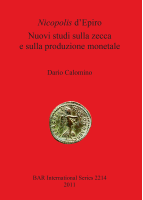Description
BOOK DESCRIPTIONThe city of Nicopolis (Epirus, northern Greece) was founded by Augustus to mark his victory over Mark Antony and Cleopatra in 31 BC at the nearby Battle of Actium. The city flourished during the period of the Roman empire and its civic coinage was one ofthe most important and most interesting of the empire. It continued in production for over 250 years from the reign of Augustus to that of Gallienus. It has many unusual features, such as the very rare silver coins produced for the emperor Antoninus Piusand his wife Faustina, and, more particularly, the long series of coins with the name and portrait of Augustus. It was originally thought that they were all produced during Augustus' reign, but it is now known that, even though their exact chronology is difficult, they were minted for most of the time that the mint was active. This new study builds on existing scholarship but establishes a new level of understanding of the mint. The author has been able to find many new specimens of the coinage, often with previously unknown designs, and has found much new important material which was previously unknown in both Italian and Greek museums. The new collection of material is incorporated in a new and well-illustrated catalogue. The catalogue is accompanied by a series of analytical chapters that place the coinage very securely in the context of our literary and archaeological knowledge of Nicopolis, and which analyse how it can contribute to our understanding of Roman provincial coinage - its rhythm of production, its extent of circulation, its pattern of denominations and its iconography. The discussion is based on a very full understanding of the coinage and of the literature concerning other provincial coinages and will make a very lasting contribution, not just to the understanding of the coinage of Nicopolis and of ancient Achaea, but also of the problems and issues of the Roman provincial coinage more generally. [Taken from the Preface by Andrew Burnett, British Museum]











